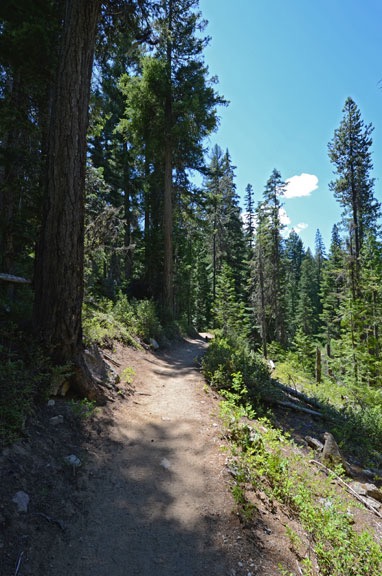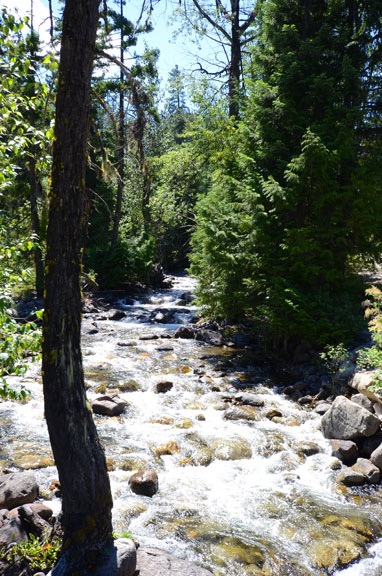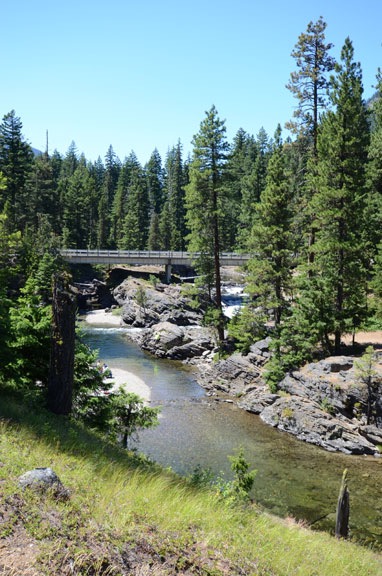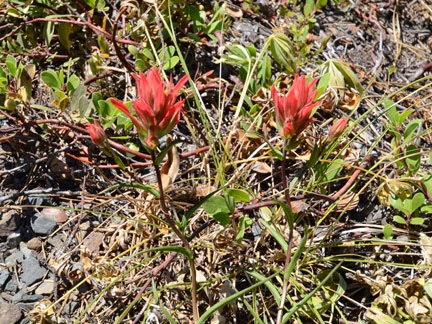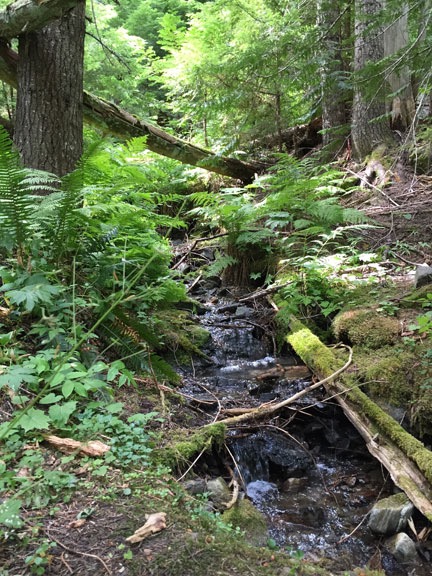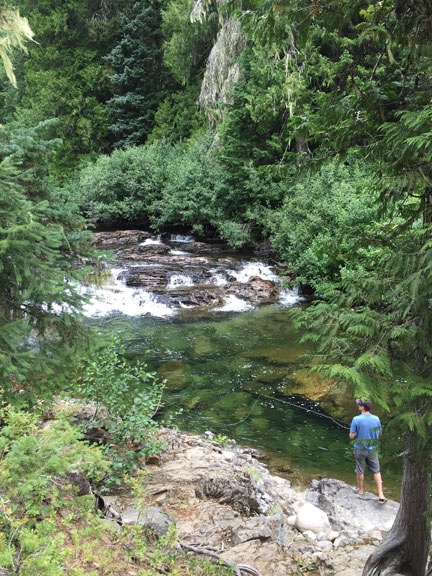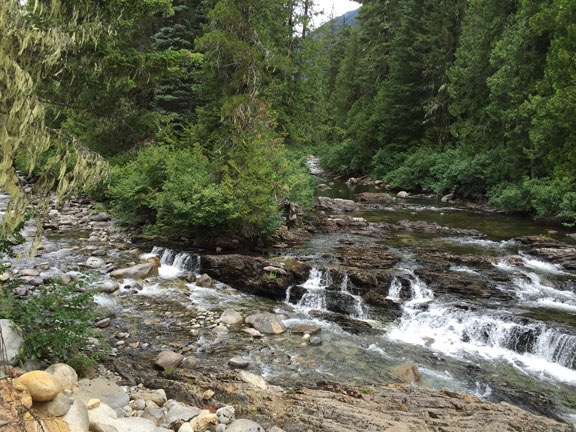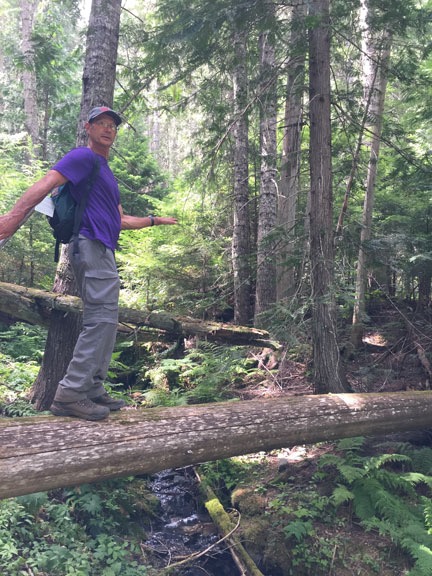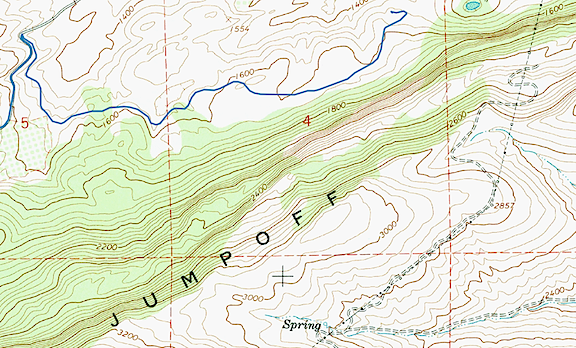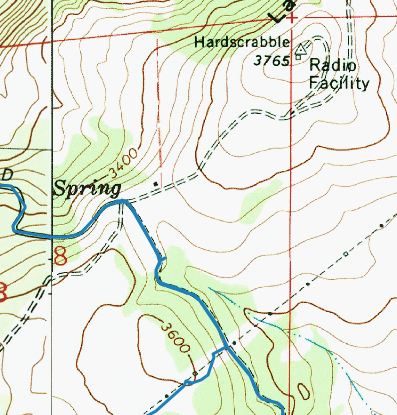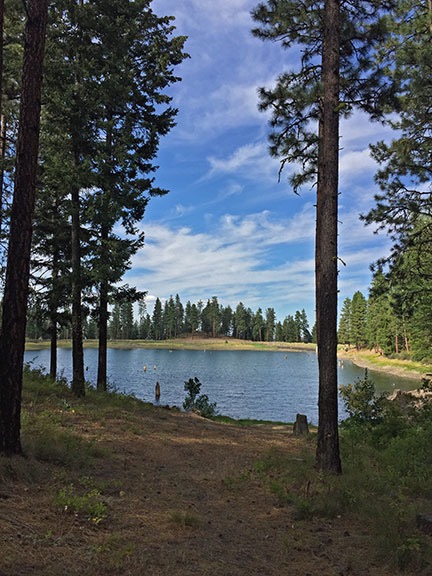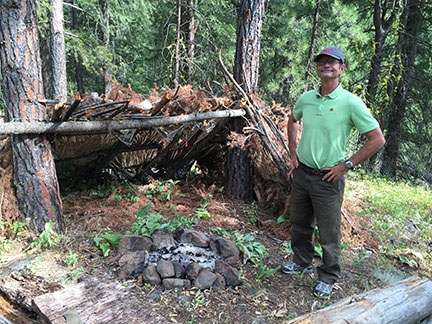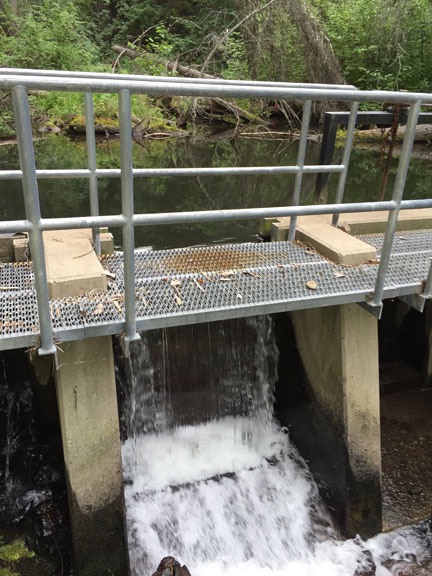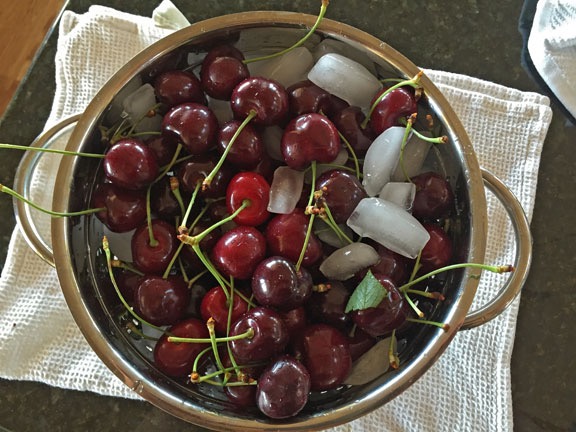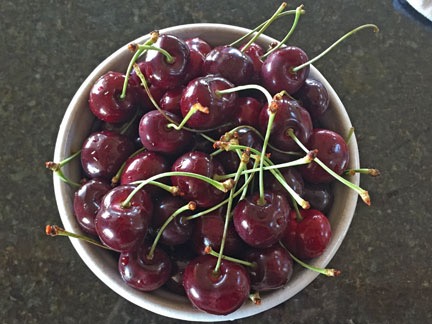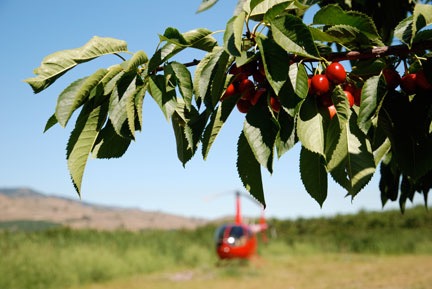A short, dry season means less flying time.

The tagline on my cherry drying business card is directly from one of my clients “The best insurance is a helicopter in your orchard.” This photo was shot in his orchard in 2009.
My cherry drying season unofficially ended Saturday afternoon. I say “unofficially” because although I’m contracted through month-end, the compressed cherry season had all orchards I was under contract to cover picked out by yesterday.
Timing and Rainfall
The season itself was very early. Although my earliest contract started only a day earlier than the previous year, other contracts started at least a week earlier than usual. My season contractually ended a full two weeks before normal. I typically get about 11 weeks of contract work, which is longer than the average pilot but shorter than the larger helicopter companies that aggregate services. (I have no desire to become like one of those companies.) I start on the river in Quincy and finish on Wenatchee Heights. This year, I got just 67 days — not even 10 weeks!
The season was compressed because of the weather. We had a very warm spring, some cooling, and then some brutally hot weather in late June. This really screwed up the growing season. Too many growers were picking at the same time. This not only dropped the prices they could get for their cherries but it made it difficult or even impossible (in the case of one of my grower friends) to get pickers.
One good thing for growers: there was very little rain. Indeed, I went out to dry on only 5 days during the 67 days I was on contract.
Despite the shorter and dryer than average season, this was my best season in the eight years I’ve been drying cherries in central Washington state. This is due primarily to additional acreage added by existing clients and a new client. More contracted acreage means more standby money and more potential work.
Other Pilots on My Team
The additional acreage under contract made it necessary to contract with additional pilots to ensure that I could promptly cover all acreage under contract. The additional standby money I collected made it possible to bring these pilots on board. I brought three pilots with helicopters in on four-week contracts and one pilot with a helicopter in for a five-week contract. Two were based on Quincy and two in Wenatchee. Their contacts overlapped so I had a total of five pilots with helicopters on my team during the two week period when we had the most acreage to cover.
I say “team” because we work as a team. Or teams. There’s the Quincy team and the Wenatchee team. I’m part of both teams — the person who helps out where needed and eats the extra cost of repositioning the helicopter. The pilots on each team know where all the acreage is. I dispatch them based on availability to get the quickest possible response time for my clients. If there aren’t a lot of orchards to cover, we’ll double up over one of them; my clients love seeing two helicopters over their orchard at the same time.
This year, we flew a total of just 19.1 hours. That’s for five pilots over a period of 27 man weeks. When you do the math, you realize that’s less than an hour a week per helicopter. It was actually worse for the Quincy pilots, who didn’t get to fly at all. All 19.1 hours was flown in the Wenatchee area.
Can you understand now why I insist that cherry drying is not a time-building job?
Are you a commercial helicopter pilot with an R44, Hiller, Bell 47, or JetRanger? If you are and want a “paid vacation with possibility of paid flying time,” you need to read this. I’m looking for experienced pilots who are more interested in a return on their asset investment than building time in that asset.
Fortunately, none of my pilots seemed to mind not flying much. I only hire experienced pilots with 500 or more hours PIC and I prefer owner/operators. None of the guys were in Washington to build time.
One of them, who was with me last year, too, already knew that there wouldn’t be much flying. He came to Quincy with an RV and truck, bicycles, and kayaks. On all the cloudless days we had, he kept busy.
The other guys soon learned that they could do the same. I’m not a babysitter — I let the guys do whatever they want, as long as they answer the phone when I call and launch promptly when dispatched. They did so we’re all good. When they weren’t flying or waiting out a possible rain event they were hiking, kayaking, touring Leavenworth or Chelan, visiting the farmers market, or just hanging out together. (I didn’t move here just so I’d be close to work three months out of the year. I moved here because it’s a great place to be.)
In general, they treat their time in Washington the way I did before I moved here: as a paid vacation with a possibility of flying work. All of the pilots who joined me this year have asked to come back next year and I’d be glad to have them back.
Some Stats
I have a master spreadsheet where I track my contract dates, income, pilots, billing, and contract labor expenses. That makes it easy to produce statistics each season. (I love stats.) Here’s a quick comparison of this year and last year.
| Stat | 2015 | 2014 |
|---|---|---|
| First Contract Start Date | 5/25/15 | 5/26/14 |
| Last Contract End Date | 7/31/15 | 8/13/14 |
| Total Contracted Days | 67 | 80 |
| Maximum Pilots | 5 | 4 |
| Total Man Weeks | 27 | 23 |
| Days with Rain Events | 5 | 9 |
| Total Dry Time | 19.1 | 38.3 |
| Average Dry Time Per Pilot Per Week | 0.7 | 1.7 |
| Total Acres Under Contract | 547 | 429 |
| Maximum Acres Under Contract at One Time | 364 | 336 |
As I mentioned above, this was my best season ever. I feel very fortunate to have built this niche market for my helicopter services and to have made this beautiful area my home. And I’m very pleased to be able to work with a number of professional, experienced helicopter owner/operators who understand the importance of good service as well as I do.
I’m looking forward to serving my existing client base with a great team again next year, protecting their valuable cherry crops from rain as I have for the past eight years.

